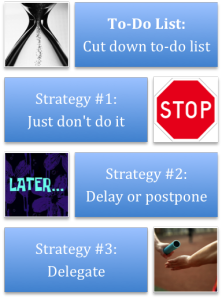http://www.patrickmckenna.com/blog
Page << Prev 20 21 22 23 24 25 26 27 28 29 Next >> of 95
Post #712 - Wednesday, July 30, 2014
Stimulating Innovation In Law Firms
It is ironic that almost every law firm, somewhere on their web site, will reference themselves as being an innovative, entrepreneurial firm. And yet, whether you are dealing with a business entrepreneur or a law firm partner, upon first hearing about a new idea or strategy, both will respond with the very same question. "Please tell me who else is doing this?"
The question is the same BUT the motivation for asking is very different. The partner needs to be reassured that some other law firm out there, that they may have a modicum of respect for, has done this and most importantly, experienced some success. For the business entrepreneur, the motivation in asking this question is completely different … they just want to know because if someone else has already done this, they likely aren't interested. It's already been done!
The time has come for law firms to create structures within the firm aimed precisely at innovation - groups whose job it is to solve difficult problems through creative business processes, a reinterpretation of the firm's position in the marketplace, new technologies or alternative staffing models.
Join Andrew Smulian (Chairman and CEO of Akerman LLP), Ken Grady (CEO of SeyfarthLean Consulting), John Paris (Chair of Williams Mullen Innovation Committee) and me for a one-hour Webinar – TOMORROW – Thursday July 31st hosted by Ark.
More details are available here:
http://usa.ark-group.com/events-details.aspx?eid=166
Post #711 – Friday, July 25,
2014
Signal What You Value As A New Leader
 One of the more profound things I’ve learned, that I try to pass
along to new leaders, be they managing partners or practice heads, is to “act
like you are on stage at all times, because you are!” Everything you do and say
will send messages, set tone, establish expectations, and communicate direction
about what is of priority to you. With that in mind, you need to carefully
orchestrate what symbolic acts you may want to execute to create a lasting
impression and convey what you stand for. One of the more profound things I’ve learned, that I try to pass
along to new leaders, be they managing partners or practice heads, is to “act
like you are on stage at all times, because you are!” Everything you do and say
will send messages, set tone, establish expectations, and communicate direction
about what is of priority to you. With that in mind, you need to carefully
orchestrate what symbolic acts you may want to execute to create a lasting
impression and convey what you stand for.
In
other words, you need to always think through . . .
Read
my entire article as posted on LinkedIn
Post #710 – Thursday, July
10, 2014
Create Your ‘Stop Doing’ List
 Many new firm leaders severely underestimate the time
that is going to be required of them to really do their job. In fact, a recent Citibank/HBR 2014 Client
Advisory, provided a commentary under the title: The Leadership Challenge.
According to the report, “One development which gives us concern is that
some of the newer breed of leaders continue to maintain busy, full time
practices. In this scenario, their clients’ needs are likely to take priority,
to the detriment of the management of the firm. If we could see any change, it
would be that firms recognize that to be effective, the firm leader is best
performed as a full time role.” Many new firm leaders severely underestimate the time
that is going to be required of them to really do their job. In fact, a recent Citibank/HBR 2014 Client
Advisory, provided a commentary under the title: The Leadership Challenge.
According to the report, “One development which gives us concern is that
some of the newer breed of leaders continue to maintain busy, full time
practices. In this scenario, their clients’ needs are likely to take priority,
to the detriment of the management of the firm. If we could see any change, it
would be that firms recognize that to be effective, the firm leader is best
performed as a full time role.”
Indeed, the biggest issue I hear about is always the
amount of time it takes to do the leadership stuff. Many are not full-time managing partners so
they struggle with trying to maintain some balance between the time needed to
manage the firm and the time required to maintain some modest personal
practice.
Here's a tip that I’ve been talking about for some
time now: Create a Stop Doing List.
Take a look at your desk. If you're like most hard-charging firm
leaders, you've got a very lengthy and well-articulated to-do list. We've all been told that leaders make things
happen – and that's true. But it's also
true that great leaders distinguish themselves by their unyielding discipline
to stop doing anything and everything that doesn't fit. And that’s not easy. We all get a personal sense of satisfaction
every time we check something off of our to-do list. Our only failing is that the things that we
are checking off are the easy tasks, like perhaps responding to some email, and
probably not the things that will advance our personal strategic goals as firm
leader or significantly change the firm. There is where the urgent crowds out the
important!
So how can you go about re-focusing your To-Do list?
Read my entire article as
posted on LinkedIn
Post #709 – Tuesday, July 1,
2014
The Vaporization of A Leader’s Legacy
 Whatever
the specifics, as a new firm
leader you know that some
change is likely going to be needed to make your firm better. Whatever
the specifics, as a new firm
leader you know that some
change is likely going to be needed to make your firm better.
Of
course, some things are more changeable than others. One thing that all new
leaders are taught is to explore and execute in those areas where you can
achieve a quick, early, small win to build credibility. One obvious way to do that is to target those
things that can be changed most easily.
By contrast, some meaningful changes are far more difficult and slow to
see results appear. Consider, for instance, how difficult it might be to
reshape your firm’s culture into a more collaborative environment. In all likelihood it could take years and a
significant investment of time. Little
wonder we tend to avoid taking on such a difficult challenge, preferring instead
to embrace those things which can more easily be changed.
But
herein is the paradox of any leader’s legacy. When the next firm leader comes
along after you, what will she try to change? Chances are, like you, the
next leader will look to change those things that can easily be changed.
And those will be precisely the things that you changed.
We and our successors change that which can be changed, each undoing the work
of the one before him. You feel a sense of accomplished at the moment of
change, and so will the professional who comes along tomorrow and undoes all of
your work. Ironically, although you feel you have made a difference, if you look back in few years, you may see little evidence of your efforts. So
much for your legacy!
* * * * *
So, if you are
someone who is about to take the reins at your firm or know some lawyer fitting
that description, here’s an article that should peek your/their interest: “Firm Leadership Is NOT For Wimps!” – http://www.patrickmckenna.com/pdfs/Wimps.pdf This article identifies eight truths that I know to be valid
based on anecdotal evidence gleaned from countless discussions and interviews
with firm leaders much wiser than I.
And, if you are (or know of a
firm) facing a firm leadership transition or even having a new office managing
partner taking charge of one of the larger offices, please have a look at: www.first100daysmasterclass.com The next program is scheduled for
Thursday, AUGUST 14th at the University of Chicago and we are now accepting registrations. Have a look at the day’s agenda, the faculty,
the testimonials, the extensive course materials, the follow-up support and
your total satisfaction guarantee. of one of the larger offices, please have a look at: www.first100daysmasterclass.com The next program is scheduled for
Thursday, AUGUST 14th at the University of Chicago and we are now accepting registrations. Have a look at the day’s agenda, the faculty,
the testimonials, the extensive course materials, the follow-up support and
your total satisfaction guarantee.
Thus far, over 60 firm chairs and managing partners
have already experienced and can attest to the benefits of this program. In fact, we received these gracious comments from a couple of those
attending our First 100 Days session:
"I was struck by the synthesis of the issues
you presented. It was amazingly clear and comprehensive, given the
breadth of the topic and the short time available. I was delighted to
attend the event and I learned a lot from it."
Hugh Verrier, Chairman - WHITE & CASE
"The First 100 Days Masterclass was
concise and insightful. I quickly learned the difference between being a
practitioner and a Firm Leader. I was thoroughly impressed with the scope
of the topics discussed.
One year later - I continually refer to that
one day class as the best thing I did to prepare for my new role."
Vincent A. Cino, Chairman - JACKSON LEWIS
Few experiences can be as overwhelming as taking on the firm
leadership role for the first time. We
repeatedly hear about how everything changes in unexpected ways. It is not about shifting from being an office
head or member of the executive committee to the next rung on some leadership
ladder, it’s a quantum leap into a new reality.
Brand new firm leaders need all the practical, impartial and time-tested
advice they can get.
Post #708 – Tuesday, July 1,
2014
More On The Future of The
Profession
There was an interesting
article in the Guardian (UK) this past week concerning the future of law. Oxford academics Carl Benedikt Frey
and Michael A Osborne have predicted computerization could make nearly half of
jobs redundant within 10 to 20 years. Office
work and service roles were particularly at risk. So
where does that leave the professions?
"We'll see what I call decomposition, the breaking down of
professional work into its component parts," says leading legal futurist Richard
Susskind. Susskind's forthcoming
book Beyond the Professions, co-authored with his son Daniel Susskind, examines
the transformations already underway across the sectors that once offered jobs
for life. He predicts a process not
unlike the division of labor that wiped out skilled artisans and craftsmen in
the past: the dissolution of expertise into a dozen or more streamlined
processes.
"Some of these parts will still require expert trusted
advisers acting in traditional ways," he says. "But many other parts will be
standardized or systematized or made available with online service." In a previous book Tomorrow's Lawyers, he predicts the creation of
eight new legal roles at the intersection of software and law. Many of the job titles sound at home in IT
companies: legal knowledge engineer, legal technologist, project manager, risk
manager, process analyst.
"Many traditional lawyers will look at that and think:
'Yes, they might be jobs, but that's not what I went to law school for. And that's not what my parents' generation did
as lawyers.'" That, says Susskind,
is not his concern: whether we call these new positions lawyers or not, the
legal sector will survive.
"What I often say is that the future of law is not Rumpole
of the Bailey, and it's not John Grisham," explains Susskind. "It's not a version of what we have today
slightly tweaked. It will be people working in the legal sector but offering
legal services and legal help in new ways." It may be the end of the profession as
immortalized in courtroom dramas, but as software eats the old jobs it will
have to create new ones too.
Meanwhile, five years ago, entrepreneur Charley Moore founded online legal services
provider Rocket Lawyer. It now boasts 30 million users. Subscribers pay a monthly fee for instant
access to pre-prepared documents and tutorials, as well as online legal
advice from experts at participating firms. The work lawyers on the network do has already
begun to resemble the streamlined, one-to-many roles Susskind predicted.
Moore is optimistic about the revolution computerization has
unleashed in his sector. "I don't think of [software] as consuming the
industry, as much as I think of it as supporting the industry. So with software, certainly there are mundane,
routine tasks that will become more efficient, but by making those tasks more
efficient, lawyers will be able to move up in the food chain and serve millions
more legal transactions than they currently can."
Post #707 – Sunday, June 15, 2014
Banking Industry Disruption
 It’s bad enough when law firms are facing major disruption
throughout the profession but when one of their most lucrative client sectors
is also going through unprecedented upheavals it does not make future demand
for legal services look promising. It’s bad enough when law firms are facing major disruption
throughout the profession but when one of their most lucrative client sectors
is also going through unprecedented upheavals it does not make future demand
for legal services look promising.
At a recent high-level New York conference on the future of
finance the news was grim for the world’s banking community. According to industry soothsayers there is a
steadily downward forecast for employment and profits in the banking sector. Ric Edelman, CEO of Edelman Financial, manager
of $13 billion investment fund, predicted that most advisors will be out of
business in five to 10 years.
In
the legal profession today, more legal apps are being made available to
consumers and small businesses. One
example is Shake, an app for creating legal contracts on the fly from your
phone. You answer a few simple
questions, the contract is compiled, you can review it and sign right on the
phone, then hand your phone to the other party to sign, or email it to them. Simple consumer level document automation in
your pocket, resulting in legally binding agreements.
Concurrently, innovative tech startups are popping up to
offer the same services as traditional banking for a fraction of the
price. Cellphones are becoming the
banks, wallets and credit cards of the world. One commentator explained how she paid a
consultant on the other side of the globe by simply writing a check,
photographing it on her cellphone and emailing it to the consultant’s email
address. The consultant then took the
image and with a simple app on her mobile was able to cash the check without
problem. Banking can be delivered by
cellphone instantaneously and accounts cleared in minutes, not days.
With traditional banking, slow clearance provides huge
profits as institutions earn profit as they hold your money. One commentator
explained, “in 2013, US banks made $32 billion on overdrafts, more than is
invested into breast or lung cancer.”
Meanwhile startups are attacking the credit card business
model. One interesting disruptor is
Dwolla who charges 25 cents per transaction and no fee to those who spend less
than $10 – compared to the 2.5% that companies charge merchants per transaction. In but a few months Dwolla has attracted
35,000 merchants and 500,000 consumers who can open an account by providing a
simple piece of identification like a driver’s licence.
Post #706 – Sunday,
June 1, 2014
The Hurdles To Initiating Change
 Firms are navigating a tough financial climate,
suppressed growth rates, and declining demand. Whatever kind of economist-speak
you prefer, there’s no getting around the fact that now is a scary time to be a
firm leader. Whether you choose to call it the digital age, the knowledge
economy, or even “the New Normal,” it seems clear that we are in the throws of
an economic revolution as profound as that which gave birth to our modern
times. Firms are navigating a tough financial climate,
suppressed growth rates, and declining demand. Whatever kind of economist-speak
you prefer, there’s no getting around the fact that now is a scary time to be a
firm leader. Whether you choose to call it the digital age, the knowledge
economy, or even “the New Normal,” it seems clear that we are in the throws of
an economic revolution as profound as that which gave birth to our modern
times.
Wherever you look within the professions, you will
see two kinds of firms: laggards who have fallen behind the change curve, and
challengers who are in front of the curve or at least at the leading edge of
it. The laggards fail to see the future coming. They fall out of the driver’s
seat. They cede the role to somebody else and then fight to catch up.
There are reasons, if not excuses, for many firms
not to take action. From their early days in school, professionals were
rewarded for success and still are today, based on their ability to look
backward in history – to find precedent, to find the experience-based rule that
will control the adjudication of the situation at hand. The need for change is
not welcomed and the more dramatic the change required, the more acute the
resistance from nostalgic past-worshippers. In order to take decisive action,
most firms have some acute change hurdles to overcome – hurdles I have come to
label: denial, perfectionism, precedent, competence, and agility.
Read my entire article as posted on LinkedIn
Post #705 – Wednesday, May 28, 2014
Join Me Next Week In New York
 Come join practice leaders from Clark Hill, Ogletree Deakins, O’Melveny & Myers, Proskauer Rose, Robins Kaplan, Wilson Elser and others at my Ark workshop entitled: Firing On All Cylinders. Come join practice leaders from Clark Hill, Ogletree Deakins, O’Melveny & Myers, Proskauer Rose, Robins Kaplan, Wilson Elser and others at my Ark workshop entitled: Firing On All Cylinders.
This is an intensive full-day workshop for Practice Group Leaders – June 4th at the AMA Executive Conference Center (1601 Broadway). Registration and agenda specifics can be found on the Ark website.
It promises to be a highly productive day.
Post #704 – Wednesday, May
28, 2014
What
is Your Firm’s Business Model?
 This is a comment from Jeff Carr. Jeff is Vice President,
General Counsel and Secretary of FMC Technologies Inc. I think his thoughts
here are worth reflecting on: This is a comment from Jeff Carr. Jeff is Vice President,
General Counsel and Secretary of FMC Technologies Inc. I think his thoughts
here are worth reflecting on:
“Let me take a minute of your time to describe the market
from my perspective (that of the true customer). The true gist is:
• “Big Law” or “Old Law” (aka a traditional law firm) is not
in the business of solving legal problems – it is in the business of billing hours
to solve legal problems.
• “New Law” (e.g., LPO’s, Axiom, Huron, etc.) is in the
business of billing lower cost hours to solve legal problems.
• “Enlightened Law” (e.g., Riverview, Valorem, etc) is in the
business of solving legal problems effectively and efficiently.
• “Next Law” is the business of preventing legal problems from
ever arising.
In-house counsel teams are uniquely situated to understand and
deliver on the prevention focus – precisely because that’s what a high
performance legal team does. The problem is that most in-house teams are just
as risk-averse as outside counsel and generally overwhelmed with reactive work.
As such, I think very few are actually focused on my vision of Next Law. The
most interesting thing about Next Law is that it co-exists with Big, Old and
New Law – as providers for reactive services when legal problems do arise – but
the focus of Next Law is on prevention and proactive law and therefore cost
reduction by limiting the incidents giving rise to the need for the high cost
remedial and reactive legal services. We’ll never eliminate fires and as such
will always need firefighters – but we can drastically reduce fire incidents
and therefore leverage the costs over fewer incidents. The truly interesting
thing is that I believe that large segments of the legal market are going
un-served today precisely because the cost of delivery of legal services is
prohibitively high. Many small and mid-size companies “go naked” and then when
they are embroiled in a legal issue, they have no recourse but to react – and
that means even higher costs.
If you wonder whether I have any basis for these views, let me
draw your attention to our track record from the time of our spin-off from FMC
Corp in 2001 until now: 2001 — $1.8B sales, $14.8 total legal spend; 2013 —
$7.5B sales, $9.8M total legal spend — and 7% average bonus to legal service
providers.
Unless you change how you provide legal services, you can’t get
metrics like those below in a world where law firm rates go up 10% a year, my
internal costs go up 5%-8% annually, the company has tripled in size, the
regulatory burden has grown significantly – while at the same time paying your
law firms more than they bill you!
Via la (R)evolution! I use that phrase because the legal
industry fights change and innovation at every turn – That said, whether
Revolution, Evolution or Foreverlution, I believe the tipping point has been
reached – it’s just that many of the players don’t see, or don’t want to see
the comet coming.”
What do you think?
Rant #703 – Tuesday May 13,
2014
Inquiring Leaders Want To
Know
 As the story goes, it was a warm spring day in
Princeton, New Jersey. One Albert Einstein, who was then working at the Center
For Advanced Studies, was found hands clasped behind his back, pacing back and
forth, mumbling to himself incoherently. A bystander, curious to discover what
it was that Dr. Einstein was so obsessed with, moved discreetly to within
hearing range. Lost in thought, Einstein continued to repeat, “If I only had
the right question . . . If I only had the right question . . . ” To this great
thinker, the journey to understanding began not with solutions, but with
questions. As the story goes, it was a warm spring day in
Princeton, New Jersey. One Albert Einstein, who was then working at the Center
For Advanced Studies, was found hands clasped behind his back, pacing back and
forth, mumbling to himself incoherently. A bystander, curious to discover what
it was that Dr. Einstein was so obsessed with, moved discreetly to within
hearing range. Lost in thought, Einstein continued to repeat, “If I only had
the right question . . . If I only had the right question . . . ” To this great
thinker, the journey to understanding began not with solutions, but with
questions.
Today, our preoccupation with finding answers must not
obscure the importance of asking the right questions. In fact, average answers
to good questions, more often than not, yield better insights than astounding
answers to lousy questions.
Here are ten questions to clear out the cobwebs, jump-start your
creative thinking, tickle the brain, and hopefully, get you energized to take
action.
Read my entire article as
posted on LinkedIn
Page << Prev 20 21 22 23 24 25 26 27 28 29 Next >> of 95
|


 Ashridge House
Ashridge House  11226 - 60 Street
11226 - 60 Street  Edmonton, Canada
Edmonton, Canada  T5W 3Y8
T5W 3Y8